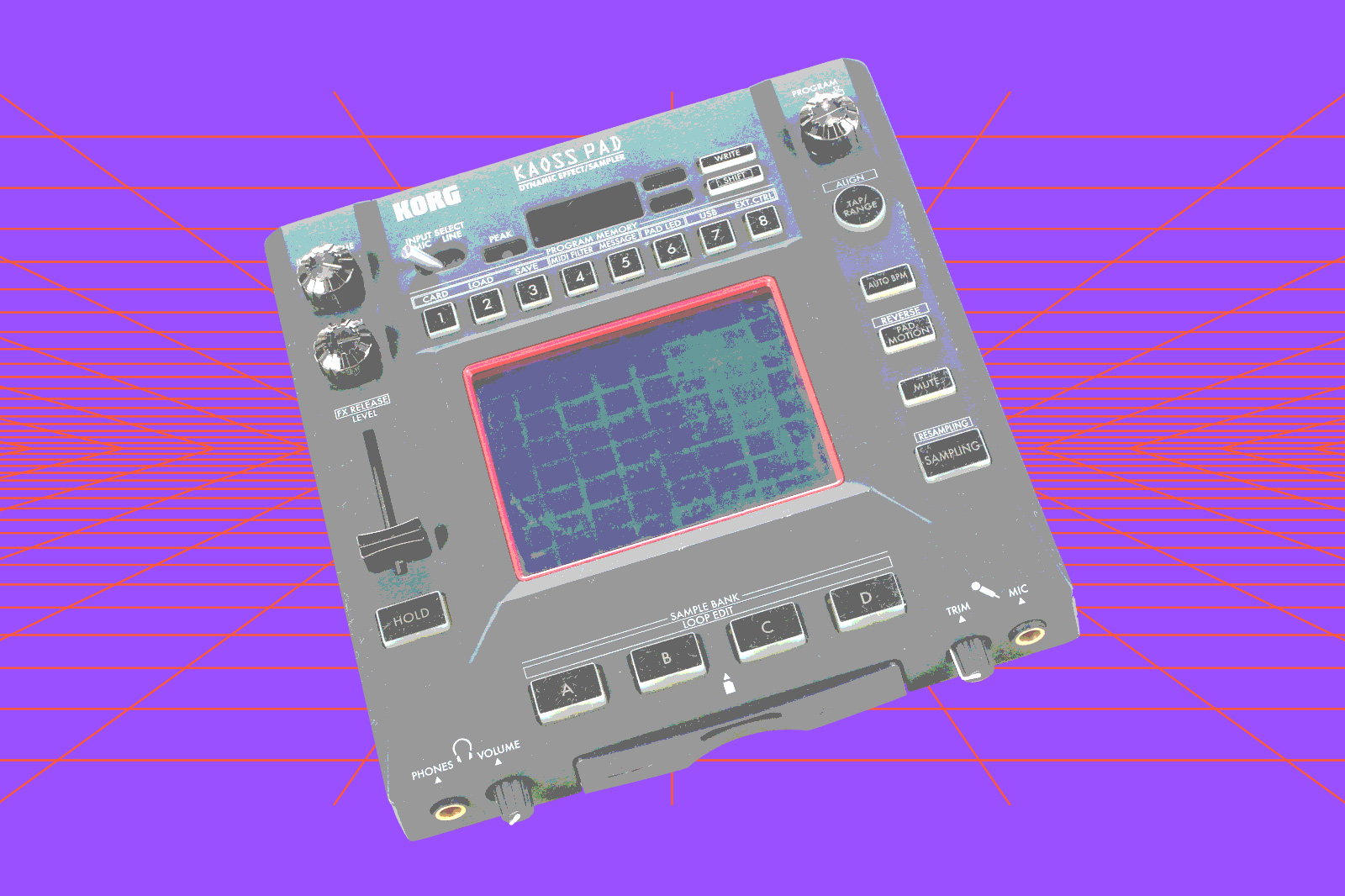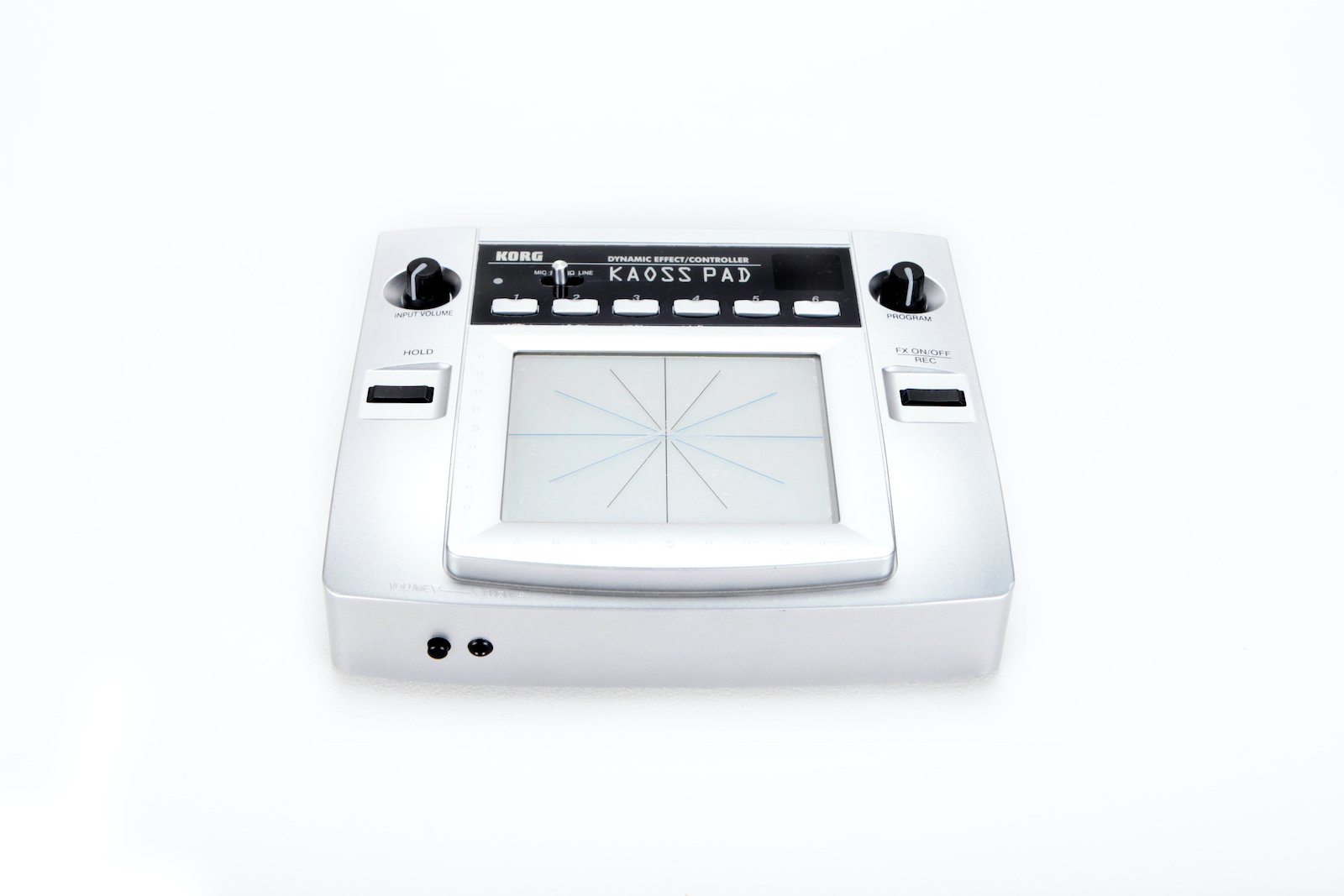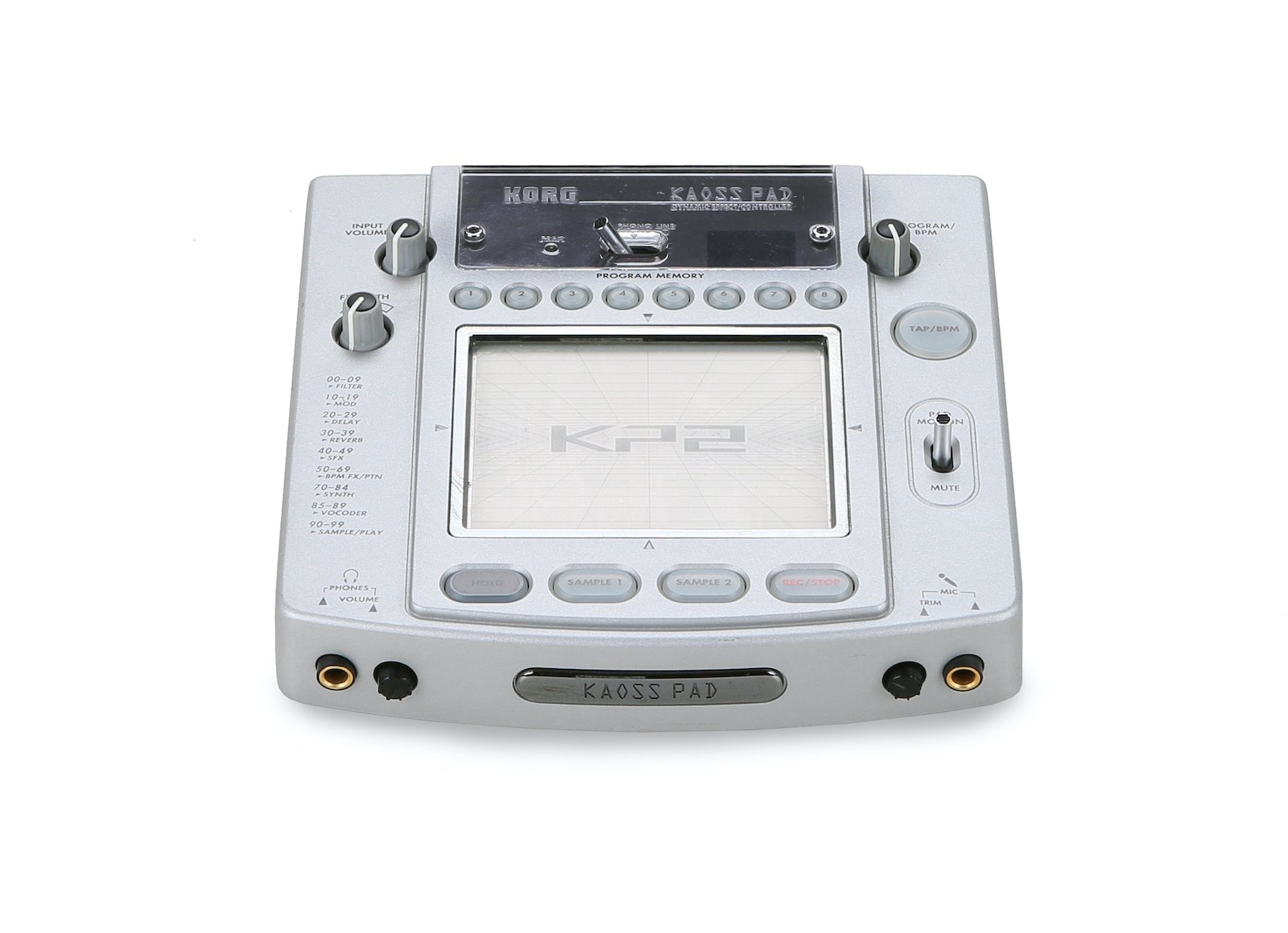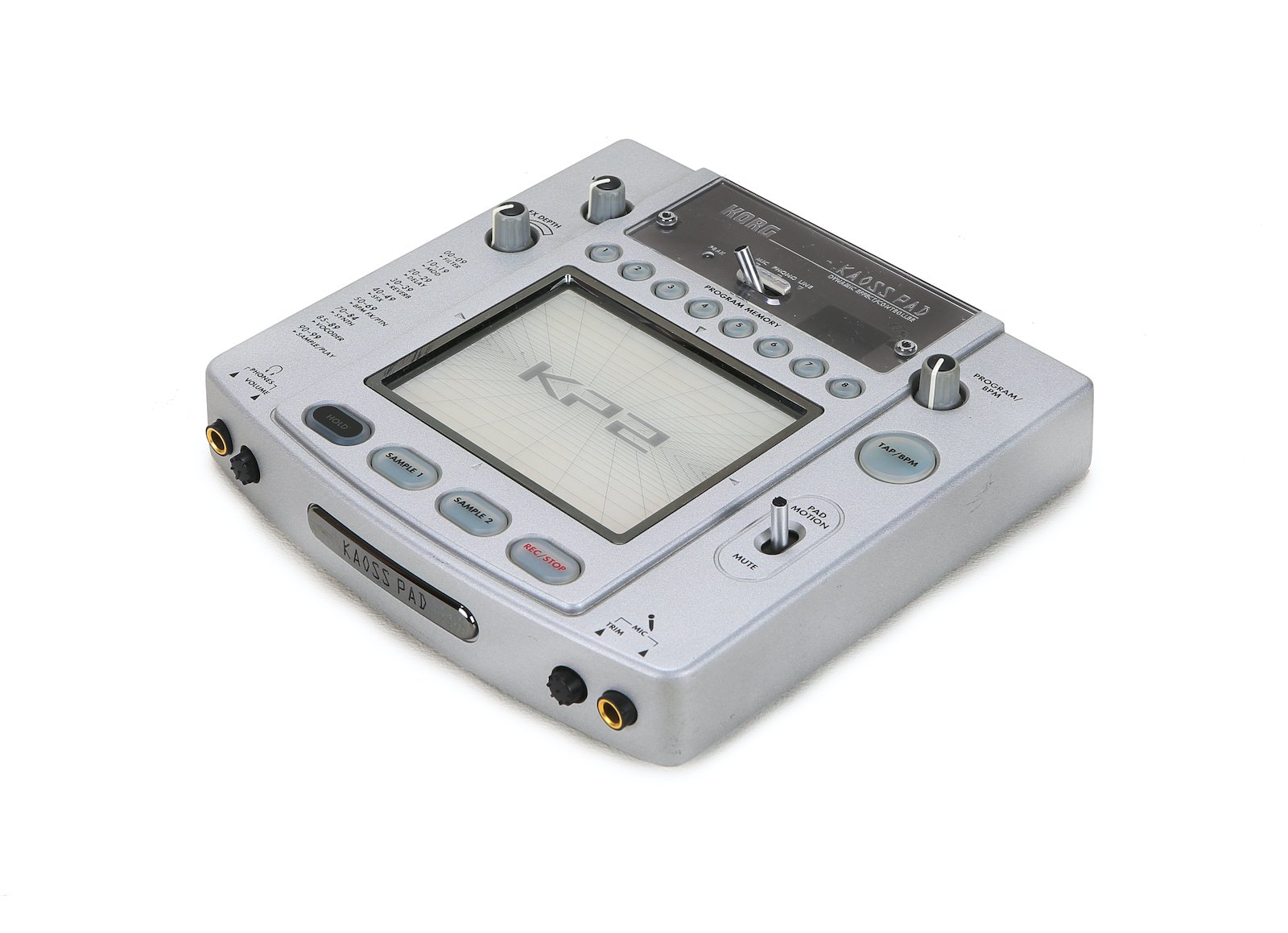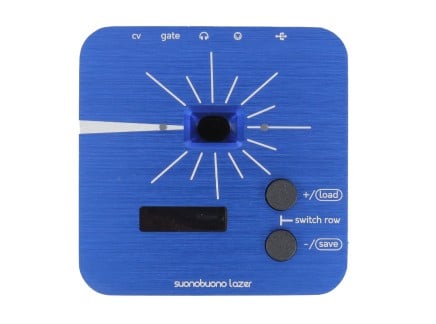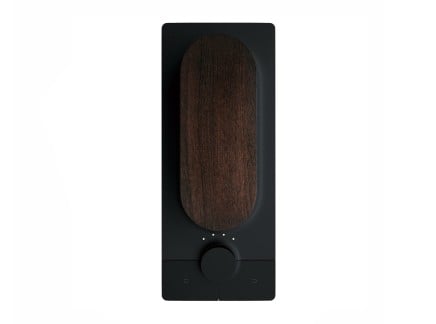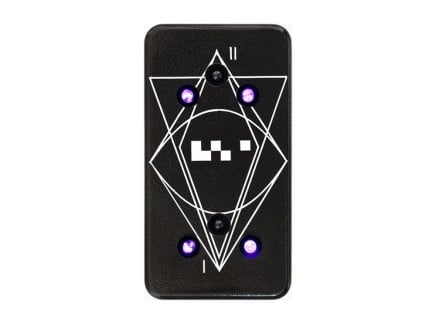One of the most powerful aspects of music is the player's expression. Just as the notes you choose deliver a message, you truly make them your own when you add bits of emotion through the way you play.
Compared to other instruments, this is often a shortcoming of synths. We’ve got mod wheels, aftertouch, and a few other tricks, but the bulk of our expressions need to be programmed in. This gives us more control, but the trade-off is that we lose some of the immediacy and spontaneity enjoyed by more traditional instruments. This is where alternative input methods come in to help you get past the limitations of keys and programmed MIDI; one of the best (or at least, most infamous) is the Korg Kaoss Pad.
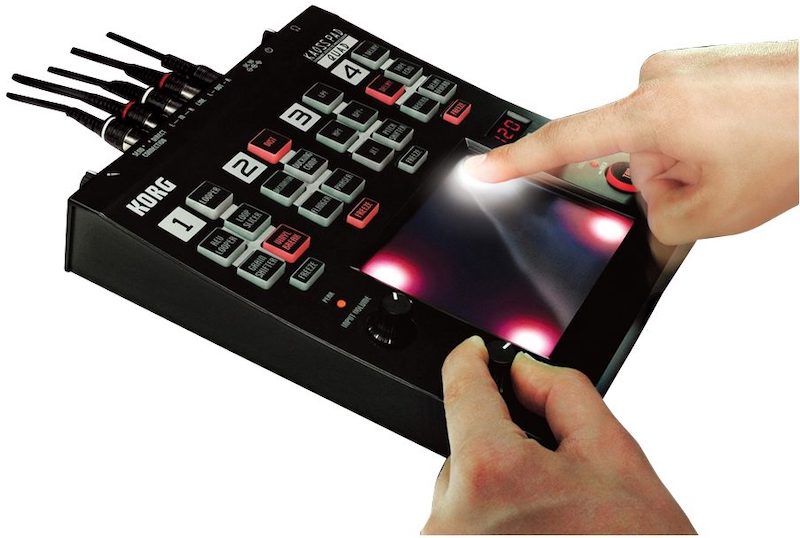 Marketing image for 2011's Kaoss Pad Quad.
Marketing image for 2011's Kaoss Pad Quad.
The Kaoss Pad gives you the ability to add expressive finger movements to your music via a trackpad-like X-Y control surface. Not only can you add expression to the movement of notes themselves, but the Kaoss Pad product line specializes in using these finger movements to control the parameters of the included effects and sound sources. You can quickly dip your tune into an ocean of reverb, fling it out of orbit into a spaced-out delay pattern, or slam it into a wall of saturation, and then freeze it in place or pull it right back with a swipe of your hand.
Aside from the common reverbs, delays, flangers, and distortions, Kaoss Pads offer up granular slicing, glitched-out madness, and other-worldly pitch shifting and LFOs; and, as we’ll explore, Korg has pushed this expressive tool into a few other forms, allowing it to behave as its own self-contained instrument, sampler, and even a video effects processor and performance tool.
The Beginnings of Kaoss
The increased capabilities of digital technology in the 1990s allowed synthesizer manufacturers to explore new alternative input methods on a grand scale. Alesis developed the powerful but tricky Alesis Air FX multi-effects processor, which used infrared sensors to read hand movements and gestures. A few years earlier, Roland introduced its D-Beam: a theremin-like tool that also used infrared tech to read the height of the player’s hand above the sensor to control synth parameters, effects, and notes. These infrared-utilizing tools were popular, but known to be unpredictable and difficult to master. Then came the intuitive Korg Kaoss Pad. It offered up something its infrared competitors couldn’t: the assuring and ever-familiar sense of touch.
[Above: the Korg Z1 synthesizer, complete with proto-Kaoss control surface. Images from Perfect Circuit's archives.]
The Kaoss Pad’s unofficial debut was actually as a feature of another product, Korg’s 1997 Z1 physical modeling synth. The Z1 was designed to emulate real-world instruments, so it was only natural for the designers to add an additional layer of expressive capability. Tucked away in the upper-right corner was an X-Y pad that allowed the player to control two parameters at once using finger movements. It was one of the first times that something like a trackpad was included on a commercially-produced synth—after all, trackpads were only just becoming prominent on laptops. The value of adding extra capacity for expressive performance was immediately recognized, and Korg didn’t skip a beat with pushing the technology further.
Just a few years later, in 1999, Korg released the Kaoss Pad KP-1, a touch pad-controlled multi-effects and sampling processor. The KP-1’s surface was dominated by a 3x4 inch X-Y pad that glowed orange at the corners with a responsive red light at the center that illuminated when touched. The KP1 was strictly an effects processor and limited sampler, meaning you needed to treat it like an effects unit or pedal, as it had no internal sound generation. However, in addition to processing incoming sound sources (including vocals from the mic input), the KP1 also had a MIDI output with the capability to assign the pad’s X and Y fields to different parameters on external gear.
[Above: the original Korg Kaoss Pad KP1. Images via Perfect Circuit's archives.]
With a total of 60 programs, the KP1 included 50 different effects programs, including reverbs, delays, flangers, and distortions. It also had limited sampling capability, with 10 dedicated sampling programs. You could record up to a five-second sample and mangle it to your heart’s content using the built-in programs.
The X-Y pad turned out to be an intuitive control method, more predictable than the infrared-powered competition, yet expressive enough to offer something you couldn’t really find anywhere else. With limited tweakability, the KP1 catered to immediacy, improvisation, and quick action, making it ideal for use as a live performance tool, especially for DJs. But the Kaoss Pad and its future iterations found a home with prominent musicians as well, including Radiohead’s Jonny Greenwood, who used it live to slice up Thom Yorke’s vocals, and Matt Bellamy of Muse, who liked it enough to mod his guitars to house a Kaoss Pad touchpad below the bridge.
The KP-1 was just the beginning of a long product line. The Korg Kaoss Pad continued to evolve and offer more features and, eventually, splintered off into several specialized pieces of gear. Let’s dig into some of the most notable iterations.
Kaoss Pad KP2
Korg’s 2002 release of the Kaoss Pad 2 (KP2) was one of the unit’s most significant upgrades. First off, the entire unit received a premium redesign with metal housing, bigger buttons, and a more reactive and varied colored-light response from the touchpad. The KP2 upgrade was much more than simply cosmetic, though.
[Above: the Korg Kaoss Pad KP2; images via Perfect Circuit's archives.]
Sampling was improved by allowing two samples to be recorded instead of one and an increased maximum length of each sample (six seconds). Sound sources were also added, including synth patches and rhythm loops, bringing the Kaoss Pad into instrument status for the first time. Tempo detection and tap-tempo input was also improved, a welcome addition given the Kaoss Pad’s affinity for rhythmic effects.
Mini KP
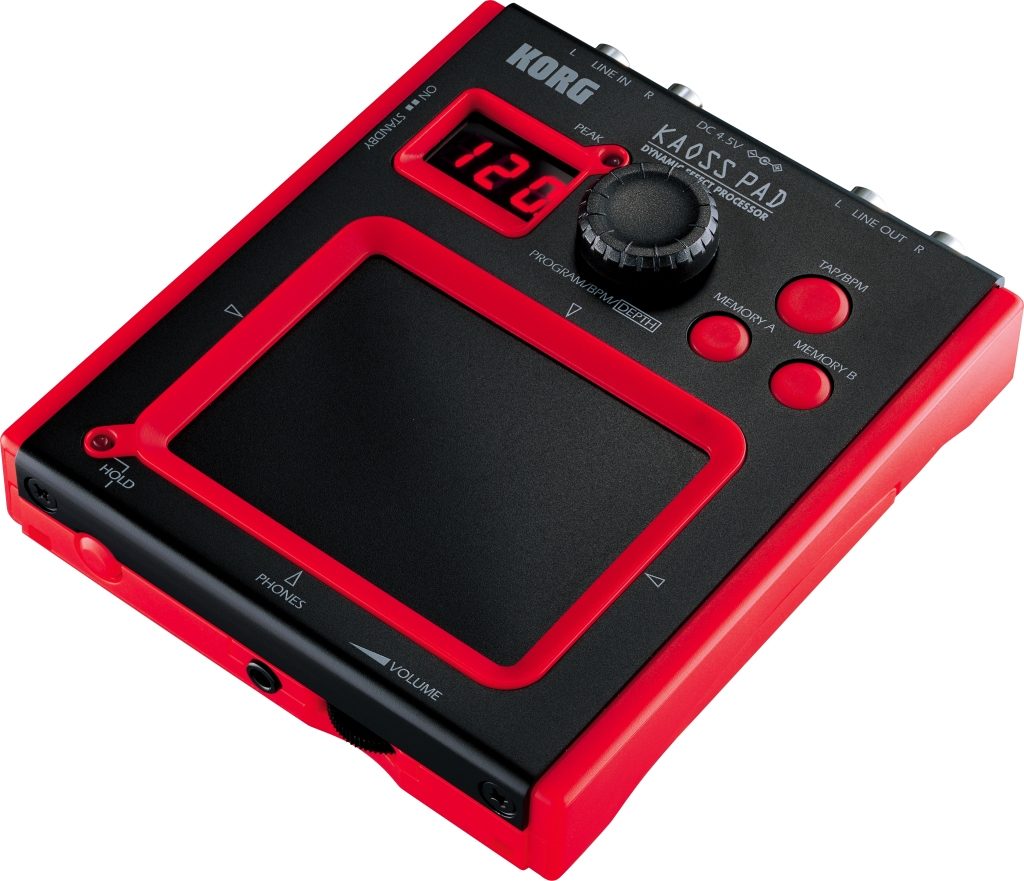
[Above: the original Korg Mini-KP, aka Kaoss Pad Mini.]
The Mini KP sought to provide a more lightweight and portable version of the Kaoss Pad. More than a few features were sacrificed to achieve a smaller footprint; there was no sampling or mic input. Also, the touchpad wasn’t backlit. But the trade-off is a much smaller size, and it could run on 4 AA batteries.
Kaoss Pad KP3
[Above: 2013 demo detailing some of the newest effect algorithms for the Kaoss Pad KP3.]
In 2007, Korg unveiled another huge overhaul of the Kaoss Pad. The KP3 changed up the look for a darker feel. The colors of the KP2 were exchanged for an alluring red glowing touchpad that was intuitively designed in an 8x8 grid that lit up where touched. The housing also took on a more modern design with complementary dark grey metallic coloring. It comes together in a very industrial kind of way.
Beyond the new look, the capabilities were also greatly enhanced. The KP3 packed in USB MIDI along with a bundled software editor. The A/D converters were brought up to 24-bit for excellent audio quality. It also included more modern programs, including some glitchy, granular-like slicing. Sampling was further improved, allowing up to four samples or loops and the ability to resample through the effects.
The KP3 also came with some major quality-of-life adjustments. In addition to the mentioned USB and software, the KP3 allowed you to adjust the start time of your loops and included an effect release parameter that eased off the effects when you stopped using it for smoother transitions.
Kaoss Pad Quad
[Above: an official product overview of the Kaoss Pad Quad, published by Korg in 2011.]
The Kaoss Pad Quad is perhaps the most focused of Korg’s Kaoss products. The Quad zeroes in on the Kaoss Pad’s strongest use case: as an in-the-moment, real-time effects processor with extreme expression capabilities.
With 20 effects, each effect gets its own dedicated button ,with the effects split into four sensible groups. You can freeze any of the effects in a group and then start layering on additional effects from the three other groups. Alternatively, you could slam on up to four effects all at once and go crazy.
Korg Kaossilator KO-1
[Above: an official product overview video for the Kaossilator, published by Korg in 2012.]
The Kaossilator explored the Kaoss Pad’s potential as a full-on instrument, with the majority of its 100 programs containing synth timbres using Korg’s physical modelling tech. It also contained effects and rhythm loops, and came with the capability of recording your own two-bar loops.
[Editor's note: Note the similarities between the Kaossilator and the Kaoss Pad Mini—these two were marketed alongside one another, and yes, if you'd busted out a Kaossilator + KP Mini setup at a house show in 2008, you would've been the coolest person in town.]
Korg Kaossilator Pro
[Above: an official product demo of the Korg Kaossilator Pro+, published by Korg in 2013.]
The Kaossilator Pro was very similar to the KP3 in build quality and feature set. It shifted to the dark, industrial look of the KP3, swapping out the dark red LEDs for emerald green and employing the KP3’s sturdy housing and grid layout on the touchpad.
The Kaossilator Pro had 200 programs, which were mostly synth sounds, like the KO-1. The loop recording increased with the ability to record loops up to four bars long and save them to an SD card. It also had an arpeggiator.
Korg later came out with the Kaossilator Pro+, which included new and updated programs and enhanced SD card compatibility.
KPE-1 Entrancer
The 2005 KPE-1 Entrancer answered the call of an increased desire for video effects in live performances. It applied the same intuitive interface of the Kaoss Pad to video, allowing the player to use one of the 100 video effects to enhance, mangle, degrade and otherwise manipulate external video sources as well as a handful of built-in video generators that included things like spectral and waveform visualizations.
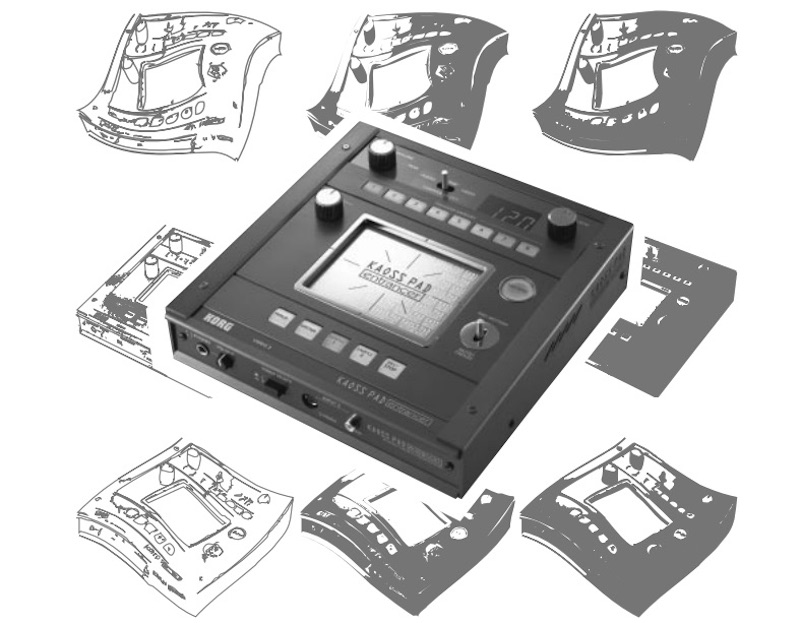
[Above: image from the user manual for Korg's Kaoss Pad Entrancer.]
Far from a video-only effects box, the Entrancer came with the full audio feature set of the Kaoss Pad 2, including its 100 audio effects. It could be used to process audio and video simultaneously or even use incoming audio to manipulate incoming video. It was truly a one-of-a-kind device.
Mini Kaoss Pad 2S
[Above: an official product demo for the Korg Mini Kaoss Pad 2, from 2014.]
The Mini Kaoss Pad 2S is the only Kaoss Pad you can still buy new, and thankfully, it’s quite capable despite its small size. It contains over 100 effects programs, robust sampling capabilities, is battery-powered (2xAA), and of course, has the famous Kaoss Pad touchpad.
Korg Modwave and Kaoss Physics
The Korg Modwave—recently discontinued—is one beast of a machine, with 32 voices, multi-timbral capabilities, and wavetable oscillators, but our focus will be on the bits of its DNA that come from the Kaoss Pad.
[Above: a 2021 Perfect Circuit product demo for the Korg Modwave—including a discussion of Kaoss Physics from our patch pal, Jacob.]
In the upper-right corner of the Korg Modwave is X-Y touchpad that is used to control parameters with the same intuitive motions and gestures as the Kaoss products, but it takes things one giant leap further. First off, touch input is no longer set to a on/off switch type of behavior that simply ceases or holds when you remove your finger from the pad. Instead, it simulates the gravitational movement of a ball that glides, rolls, and bounces across the surface of the X-Y plane.
So, if you can imagine guiding sound by using a Kaoss Pad’s touchpad, imagine what it could sound like if, instead of lifting your finger for the sound to stop, you took a hard swipe and watched the LED indicator bounce and ricochet off the sides of the touchpad taking the effect parameter settings with it. What’s more, is that you don’t just decide how hard, fast, or in what direction the ball rolls along; you can also shift the X-Y plane by adding tilts, dips, and bumps, so it’s actually a 3D X-Y-Z plane as height plays a part. You can use a friction setting to determine how reactive the ball is and how easily it moves in the Modwave’s mini-universe. You can also choose whether the ball ricochets off the edges of the plane or slips through Mario-style to re-emerge on the opposite side.
It may sound weird and tricky to use, but it’s actually easy and organic, using feel and motions we are familiar with simply as beings in a physical universe. This is easier to see and understand when visualized on the Modwave's display. But do yourself a favor, and don’t even bother checking it out unless you can afford a Modwave right now, because, yes, it sounds incredibly awesome, and, yes, you’ll probably want it and, no, there’s currently nowhere else to scratch that physics/modulation itch in the way presented by the Modwave.
Getting in Touch
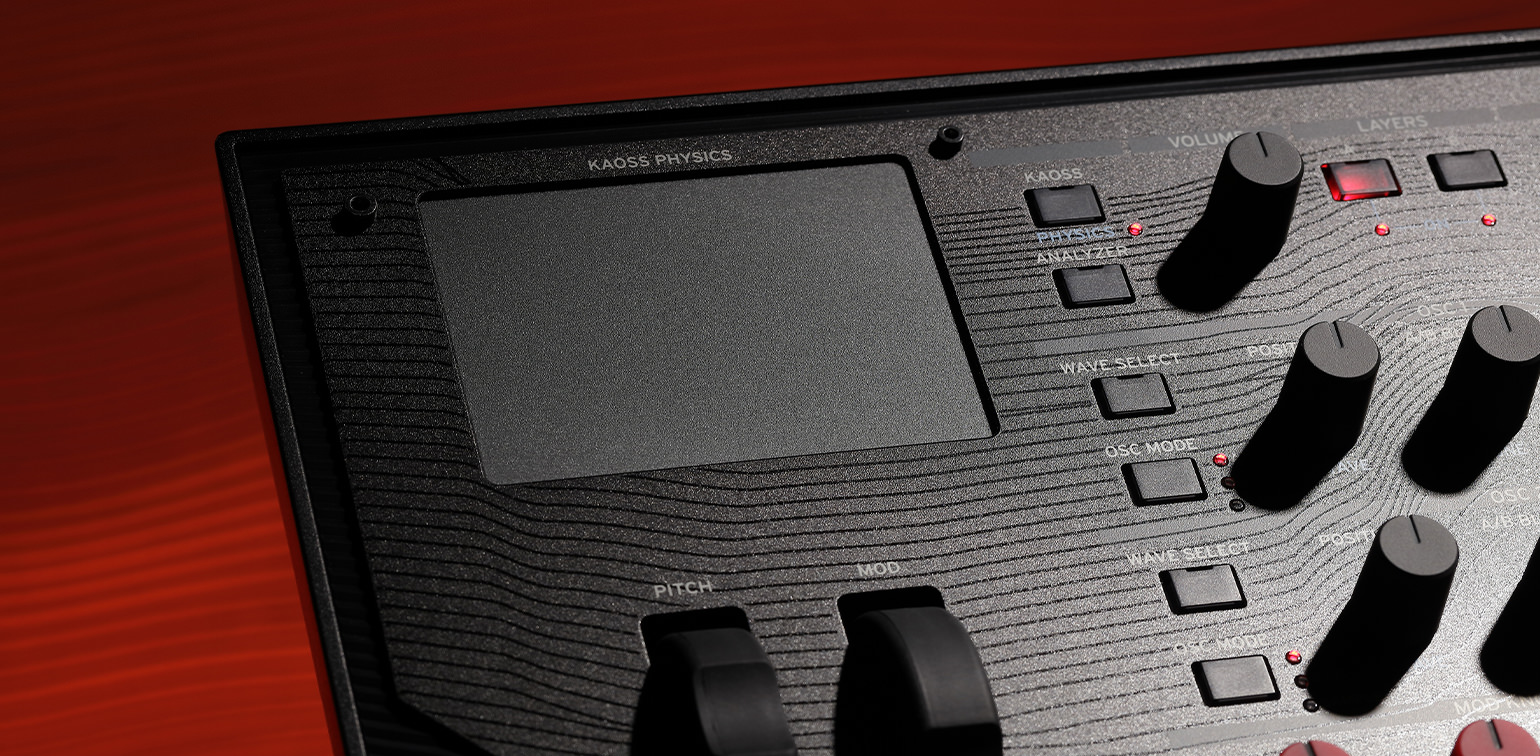
While nearly all of the Kaoss product line is out of production, it’s clear Korg plans on continuing its novelly expressive Kaoss lineage. And with Kaoss Physics, they have found a way of adding another layer of modulation while keeping the same intuitive feel of the Kaoss Pad. It’s easy to picture a stand-alone Kaoss Physics Pad in the near future...we can dream, right?

